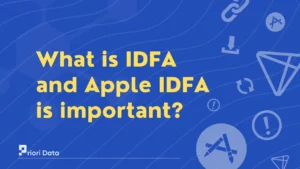Ad inventory refers to the total number of ad spots or placements that a publisher has available to sell to advertisers. Having a good amount of quality ad inventory is crucial for publishers to generate revenue.
Why is ad inventory important?
Advertisers also rely on ad inventory to get their marketing messages in front of target audiences. So ad inventory serves as the supply that fuels the digital advertising ecosystem.
When there is a lot of demand from advertisers but limited ad inventory, publishers can charge higher prices for their ad placements. On the other hand, an oversupply of ad inventory drives prices down.
Understanding their available ad inventory helps publishers set prices and sales strategies to maximize revenue. For advertisers, assessing a publisher’s ad inventory helps ensure there are enough opportunities to reach their campaign goals.
How do you calculate ad inventory?
Ad inventory is calculated by the number of impressions or ad units that can be served. Here are some key metrics used:
- Site or app traffic – Higher site visits or usage leads to more ad impressions being served. Publishers look at unique visitors, page views, and sessions.
- Ad unit details – The number, type, and placement of ad units impact inventory. More ad units mean more inventory. Different ad types like banners, native ads, or video ads also contribute differently.
- Frequency caps – This limits how many times a user sees the same ad within a period. Lower frequency caps reduce the impressions available.
- Targeting – Narrow targeting to a smaller demographic segment decreases potential inventory versus broader targeting.
- Time period – Inventory expands the longer the time period. There’s more inventory available for a month-long campaign than for a day-long campaign.
By factoring in these elements, publishers can estimate the total ad impressions or other ad units they have to sell over any given period of time.
What types of ad inventory are there?
There are a few main types of ad inventory publishers can offer:
- Display – This includes standard banner ads in different sizes and formats. Display ads may be static images or rich media like video.
- Native – Native ads match the look, feel, and function of the surrounding editorial content. For example, promoted posts in social media feeds are native ads.
- Video – Video inventory comes from publishers serving video content, like YouTube, Facebook, or media sites with embedded videos. Pre-roll and mid-roll video ads are commonly available.
- Audio – Audio ads are served on podcasts, music streaming platforms, and radio stations. Audio ad inventory opens up new branding opportunities.
- Mobile – With mobile usage growing, mobile ad inventory comes from apps and mobile sites. Mobile banner ads and interstitial ads between content are examples.
- Digital out of home – DOOH refers to digital billboards, signage, and other outdoor displays that can show digital ads. This inventory reaches consumers outside the home.
How do you buy and sell ad inventory?
There are several methods publishers and advertisers use to transact ad inventory buys and sales:
1. Real-time bidding
Real-time bidding (RTB) is an auction-based system where ad inventory is bought and sold on a per-impression basis. Advertisers bid against each other in real time for each available ad impression.
2. Programmatic direct
With programmatic direct, advertisers purchase reserved ad inventory from specific publishers through programmatic channels. Unlike RTB, deals are negotiated upfront between the buyer and seller.
3. Private marketplace
A private marketplace (PMP) gives select advertisers access to a publisher’s inventory through auction-based buying. Publishers can grant access to specific advertisers and set pricing rules.
4. Direct sale
Direct ad sales involve advertisers purchasing ad placements directly from publishers through human sales teams and negotiations. Deals for high-value inventory like homepage takeovers may be sold this way.
In summary, ad inventory is the lifeblood of digital advertising. Publishers must manage their supply of ad units effectively, while advertisers rely on inventory availability to achieve campaign success.
A range of purchasing methods caters to different needs. Understanding the nuances of ad inventory helps optimize outcomes for publishers, advertisers, and consumers.
F.A.Q
Q1: What is a mobile inventory?
A1: The total ad space available for sale on mobile apps and sites.
Q2: What does inventory mean in marketing?
A2: The stock of products, materials, or advertising space available for sale.
Q3: What is inventory in digital marketing?
A3: The supply of ad impressions available on websites, mobile apps, social media, etc.
Q4: What does inventory mean in media?
A4: The advertising time or ad space a media company has to sell.






